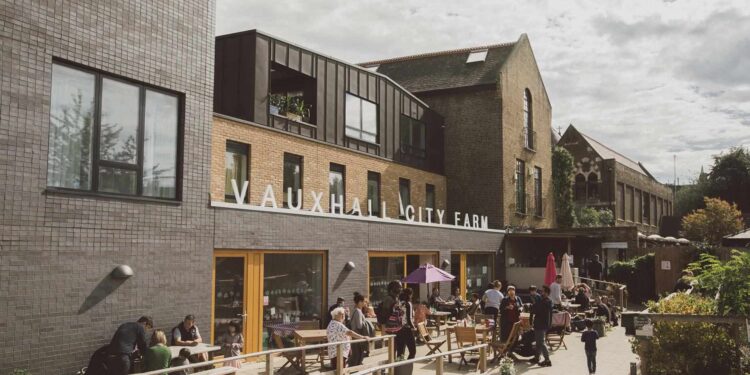The Impact of Interest Rates on London Property Investment: What Investors Need to Know
Interest rates are a fundamental force shaping the profitability and dynamics of property investment. For London landlords, understanding how the Bank of England’s monetary policy affects everything from mortgage costs to rental yields and capital growth is crucial for making informed decisions. As we navigate 2025 and look ahead to 2026, the current economic climate presents both challenges and opportunities that are inextricably linked to the trajectory of interest rates.
This in-depth guide will break down the intricate relationship between interest rates and London property investment, providing landlords with the knowledge to mitigate risks and optimise their portfolios.
1. The Current Interest Rate Landscape (Mid-2025)
After a series of aggressive hikes that saw the Bank of England (BoE) Base Rate peak at 5.25% in August 2023, 2024 and early 2025 have seen a more favourable trend. As of June 19, 2025, the BoE Base Rate stands at 4.25%, following several gradual cuts.
Forecasts for 2025-2026:
- Further Cuts Expected: Market analysts are largely predicting additional cuts through the rest of 2025, with expectations for the Base Rate to reach around 3.75% by the end of 2025.
- Stabilisation Ahead: Projections suggest the Base Rate could be around 3.71% by January 2026, potentially stabilising above pre-pandemic lows but still offering a more affordable lending environment than recent highs.
- Inflationary Watch: The BoE’s primary mandate is to control inflation, which currently stands at 3.4% (May 2025), above the 2% target. While expected to fall back, the BoE has made it clear it will not hesitate to raise rates again if inflationary pressures prove persistent.
Action Point: Stay updated on BoE Monetary Policy Committee announcements. Even small movements in the Base Rate can have significant implications for your mortgage costs.
2. Impact on Buy-to-Let Mortgage Rates
The Base Rate directly influences the cost of borrowing for buy-to-let (BTL) mortgages.
- Falling Product Rates: As the Base Rate has decreased, BTL mortgage product rates have followed suit. We’re seeing more competitive deals emerge, with some lenders offering sub-4% fixed rates for lower Loan-to-Value (LTV) products (e.g., best 2-year fixed at 60% LTV around 3.97% in July 2025).
- Variable vs. Fixed Rates:
- Variable/Tracker Mortgages: Your monthly payments will directly track changes in the Base Rate. If rates fall, your payments decrease; if they rise, they increase. This offers flexibility but exposes you to risk.
- Fixed-Rate Mortgages: Your payments remain stable for the fixed term (e.g., 2, 3, or 5 years), offering budget certainty. Many landlords are opting for shorter fixed terms now, hoping for further rate cuts before refinancing.
- Affordability (ICR Stress Tests): While product rates are falling, lenders still use ‘stress test’ rates when calculating your Interest Cover Ratio (ICR). This assesses if your rental income can cover your mortgage payments even if rates rise to a hypothetical higher level (e.g., 5.5% – 7.5%). Lower actual product rates can make it easier to meet these stress tests, potentially allowing you to borrow more or access more competitive deals.
Action Point: Review your current mortgage deals. If you’re on a variable rate, ensure your cash flow can handle potential upward movements. If on a fixed rate nearing expiry, explore remortgaging options well in advance with a specialist BTL broker.
3. Impact on Rental Yields and Investor Profitability
Interest rates are a major determinant of your net rental yield (profitability after expenses).
- Increased Costs for Geared Investments: For landlords with mortgages, higher interest rates mean higher monthly mortgage payments, directly reducing your net rental income and thus your rental yield.
- Improved Cash Flow: Conversely, as interest rates fall, your mortgage payments decrease (for variable or when refinancing), leaving more of your rental income as profit and boosting your net yield. A 0.25% reduction can free up hundreds of pounds annually per property.
- Tenant Affordability: Higher mortgage rates for homebuyers can deter them from purchasing, keeping more people in the rental market and sustaining demand. However, significantly higher interest rates can also impact tenants’ overall affordability, limiting how much landlords can raise rents. In London, strong population growth and continued barriers to homeownership mean rental demand is expected to remain high, providing some insulation.
- Rental Growth: Despite rate fluctuations, London’s rental market continues to show growth (forecasted +1.3% to +4% for 2025). This combined with easing borrowing costs creates a more favourable environment for landlords’ profitability.
Action Point: Calculate your net rental yield diligently, accounting for your true mortgage costs. Consider how potential rate changes could impact your cash flow.
4. Impact on Property Valuations and Capital Growth
Interest rates also influence property prices and your potential for capital appreciation.
- Affordability & Demand: Lower interest rates make mortgages more affordable, increasing buying power and stimulating demand in the sales market. This can lead to upward pressure on property values.
- Investor Sentiment: Lower rates typically improve investor sentiment, making property a more attractive asset class compared to other investments (e.g., savings accounts).
- London’s Nuance: While Prime Central London (PCL) values have been slower to recover, more affordable outer and prime outer London boroughs have shown resilience and even modest price growth in early 2025. As rates continue to ease, a broader recovery in London property values is expected in 2026 onwards.
- Cash Buyers: A significant proportion of London transactions (especially in PCL) involve cash buyers, who are less directly impacted by interest rates, providing some stability to the market even during periods of high rates.
Action Point: Recognise that property value growth is a longer-term play. While interest rates impact it, local demand, regeneration, and economic stability are also crucial.
5. Strategies for London Landlords to Mitigate Interest Rate Risk
Navigating interest rate fluctuations requires a proactive approach:
- Fix Your Mortgage Rate: For budget certainty, consider fixing your mortgage rate. Longer fixes (e.g., 5 years) offer more stability but might mean you miss out on further rate drops. Shorter fixes (e.g., 2 years) allow you to review more frequently.
- Stress Test Your Portfolio: Ensure your rental income can cover your mortgage payments even if rates rise beyond your current product rate. Work with your broker to understand your ICR thresholds.
- Build Cash Reserves: Maintain a healthy cash buffer to cover unexpected costs, void periods, or higher mortgage payments if rates rise.
- Optimise Your Structure: For higher-rate taxpayers, holding properties in a limited company can offer tax efficiency, as finance costs are fully deductible against rental income (subject to Corporation Tax, not Income Tax). This reduces the impact of Section 24.
- Diversify Your Portfolio: Spread your investments across different locations, property types, and tenant demographics to reduce overall risk.
- Regular Review: Engage with a specialist buy-to-let mortgage broker annually. They can help you access exclusive deals and advise on optimal refinancing strategies.
Understanding and strategically responding to the impact of interest rates is paramount for London property investors. By leveraging available financing options and adopting proactive risk management strategies, you can maintain profitability and ensure the long-term success of your portfolio in the capital’s dynamic market.















